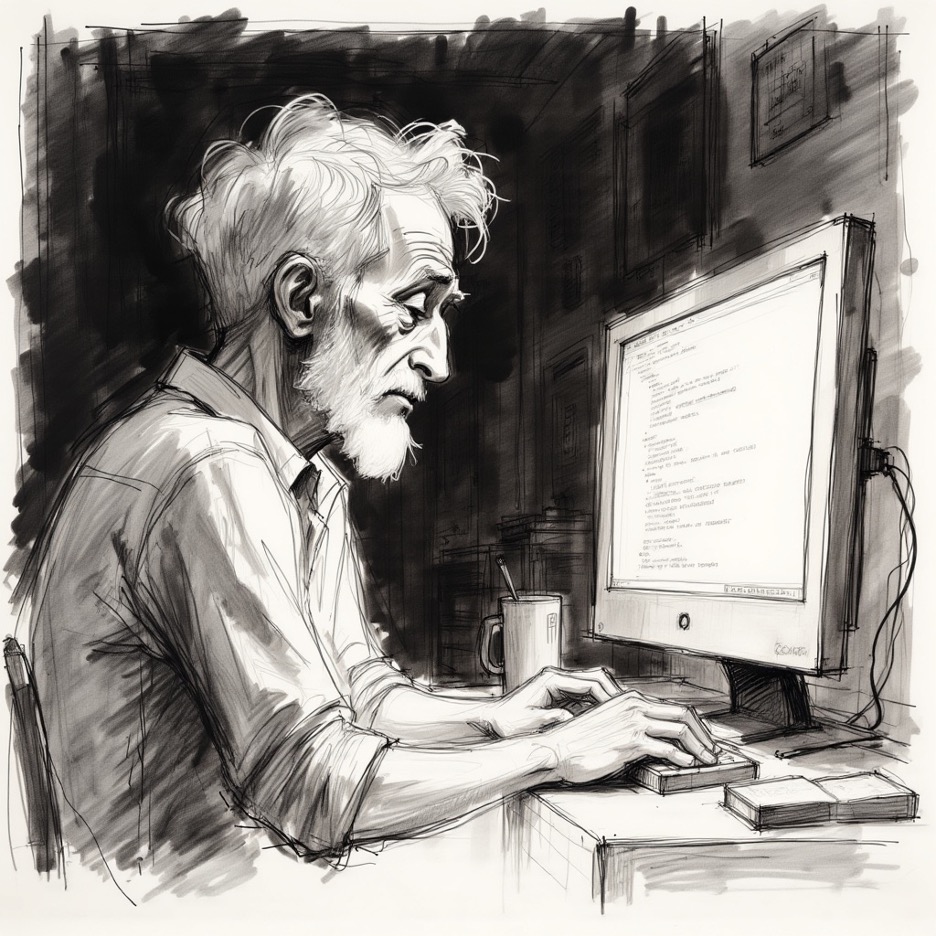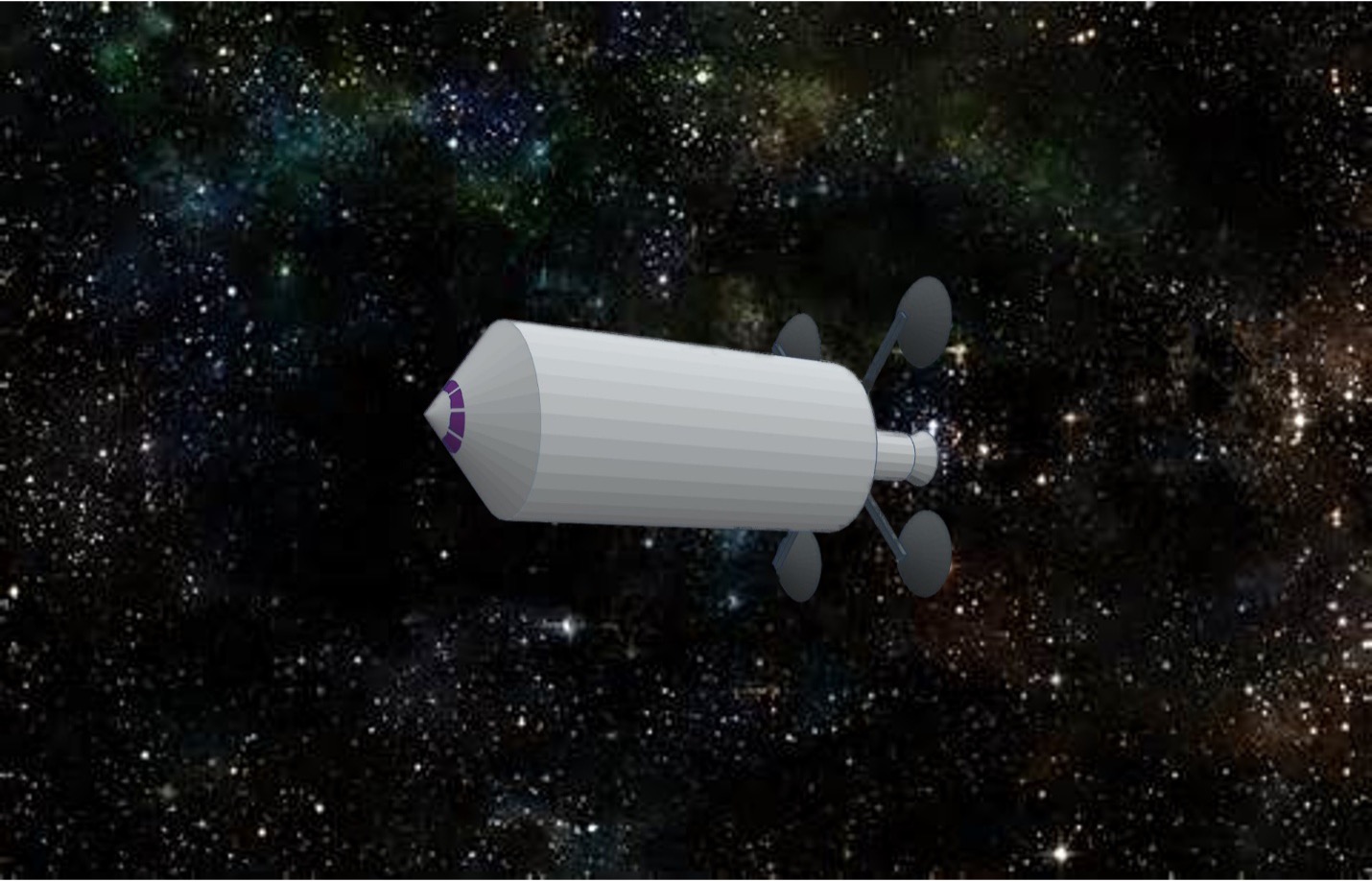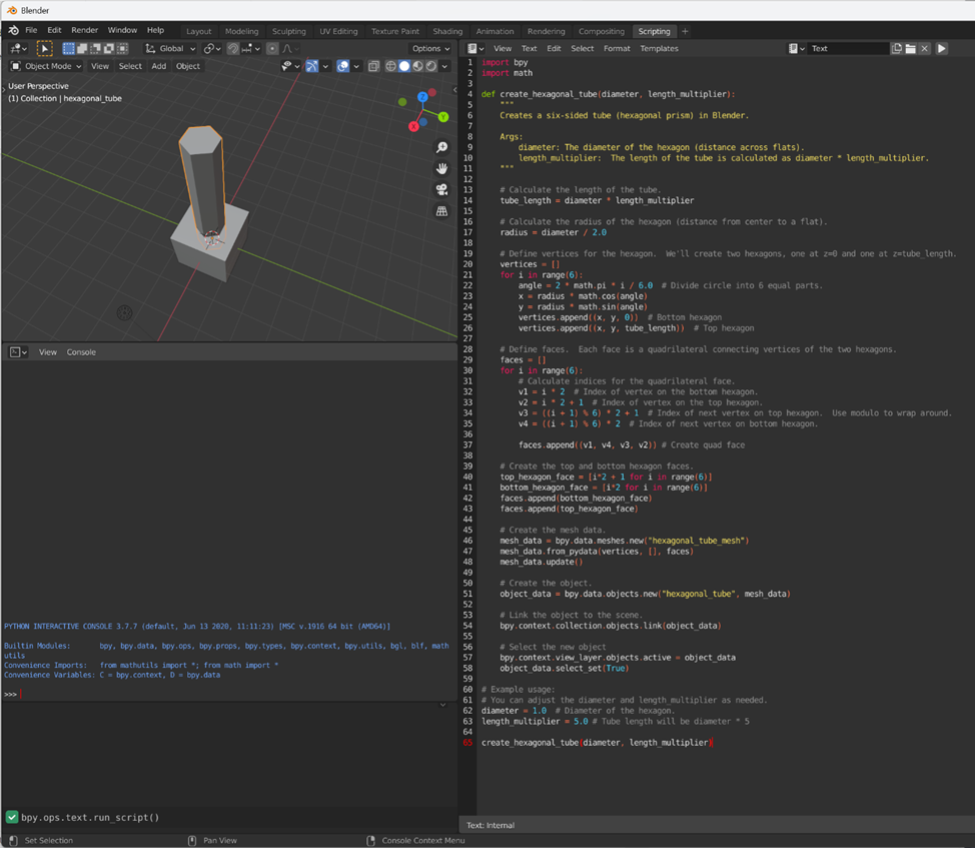I wanted to create an image of a six-sided spaceship for a sci-fi space story and tried using various programs, including LibreOffice Draw, SketchUp, and AutoCAD, but was unable to achieve the desired result. I discovered Google AI Studio, which generated Python code to create the desired spaceship model in Blender 3D creation software, and was able to produce the image quickly.

As a hobby, I write fiction, and one of my projects is a sci-fi space story. In it, I have a six-sided spaceship—a collection of long A-frame-like sections resulting in a faceted surface. To convey the concept, I thought creating an image of the spaceship would be helpful. I tried drawing it in LibreOffice Draw but couldn’t get the fidelity I wanted—my lack of skills was not the drawing program’s fault. Next, I tried a constructive geometry approach using SketchUp, which got a satisfactory image but one that was difficult to manipulate and dimension.

I tried AutoCAD and quickly learned I would never master it. I’d always been fascinated by Blender for other projects and general curiosity, but I could not find things in the mazes of menus. The how-to videos were just frustrating because the presenter moved so fast and assumed you knew where every tool was and how to use it. I wanted, but I couldn’t find, Blender for Dummies. I have since discovered there are actually several such books.
The other day, out of curiosity, I tried Google AI Studio. I typed in: create a six-sided tube that is five times longer than the diameter. Before I could get my hand off the mouse and back to the keyboard, I had a Python listing that was even color coded. I stared at the code for a while, mesmerized more than looking for bugs or errors. If I had tried to write that code, it would have taken the better part of a day of trial and error and looking up rules and examples.
But, would it work?
I loaded Blender.
Not only did Google AI Studio generate the code, but it also told me how to load it into Blender.
Copy, Paste, Run.
Again, as fast as I hit Run, it did, and produced the image.

This was the fastest thought-to-results experience I have ever had. Python is mostly an interpretive language, so I didn’t have to go through a compiler step—you can compile Python if you want really tight, small-footprint code. I now had a manipulative, prospectively correct, dimensioned, solid model I could build on.
I’ve known Blender and its developer, Ton Roosendaal, since the beginning of 1994. I have written about the software for over 30 years, and I’m embarrassed that I have never used it until now. I’ve touted its ease of use (a secondhand report and from watching demos) and recommended it to studios, game developers, and designers for decades, but I was a barefooted cobbler till now.

And now I am dangerous. I know just enough to do some damage. There is no telling what my spaceship is going to turn into. Maybe I’ll produce a good enough version of it to write about it again. But I have to be careful not to bring any shame or embarrassment on Blender—they know where I live.
LIKE WHAT YOU’RE READING? INTRODUCE US TO YOUR FRIENDS AND COLLEAGUES.